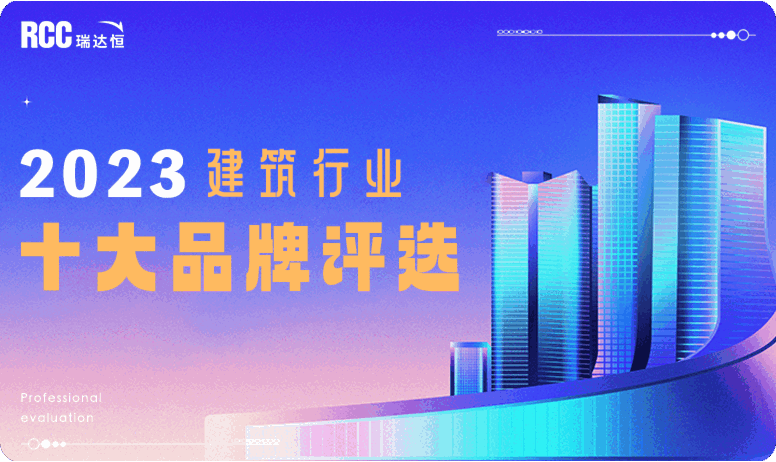Marcial Jesus:建筑师选对赛道,是成功的关键
来源:畅言网 2024-05-09
有人说,选对赛道,是比赛成功的关键。智利建筑师Marcial Jesus深谙“赛道选择”的哲学。十多年前,他就注意到建筑设计领域人才扎堆,目光独到地将公共空间设计选定为自己的开拓领域,构建出多个色彩绚丽、充满奇趣的空间案例。不到二十五岁,他来到上海,将中国作为创业的发起地。凭借非凡的勇气和眼光,多年的积累下,他在中国做项目设计稳扎稳打的同时,还将业务拓展到中东和北非。
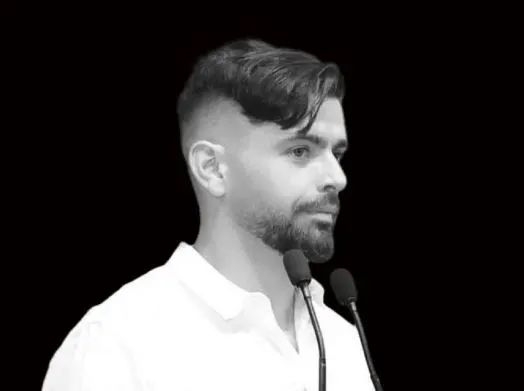
Marcial Jesus
100architects佰筑 创始人/首席执行官
您曾就职于福克萨斯建筑设计事务所和大都会建筑事务所,从这些明星事务所获得了哪些项目经验?
You’ve been working at FUKSAS and OMA, what project experiences have you gained from those star architecture firms?
在罗马的工作经历非常关键,让我有了远大的梦想。我第一次有机会对国际建筑事务所有了深入了解。尽管当时是实习阶段,我只是为主案设计师做一些辅助工作,但依然收获颇丰,全身心投入到学习国际化设计、项目和设计方法中。这对我的正向影响很大,实习还没结束,我就更新了作品集,并尝试申请其他欧洲设计公司。2010年,我幸运地加入到OMA的荷兰鹿特丹总部。
这段经历很神奇,我参与了多个国际设计竞赛,全部都在亚洲地区。我得以瞥见顶级建筑事务所的运行机制,世界各地的人才齐聚一处,观察到他们的工作场所和设计方法,激励并鼓舞了我,树立更高的目标。2010年底,我回到智利,参加学位考试,并用最短时间提交毕业设计,在2011年初顺利毕业。
That experience working in Rome was very significant, more than anything because it made me dream high. It was the first time I saw an international architecture company from the inside. Although in that internship I did mainly basic things helping the main designers, it helped me a lot to learn how to work and immerse myself in the world of international design, programs and methods. This experience was so positive that, before reaching the end, I updated my portfolio again and started applying to other European offices to see if any application could go through. I was lucky enough to be hired at OMA in the Netherlands, where I spent 2010 working at their headquarters in Rotterdam.
That was a spectacular experience for me. I participated in several international competitions, all in Asia. I saw inside the machinery of a top-level international architecture company, with people from all over the world, their work spaces and their methodologies. I think this was an experience that inspired me and made me dream big. Then, at the end of 2010, I returned to Chile since I had not yet taken my final degree exam. I had to present my final project in record time to finally be graduated at the beginning of 2011.
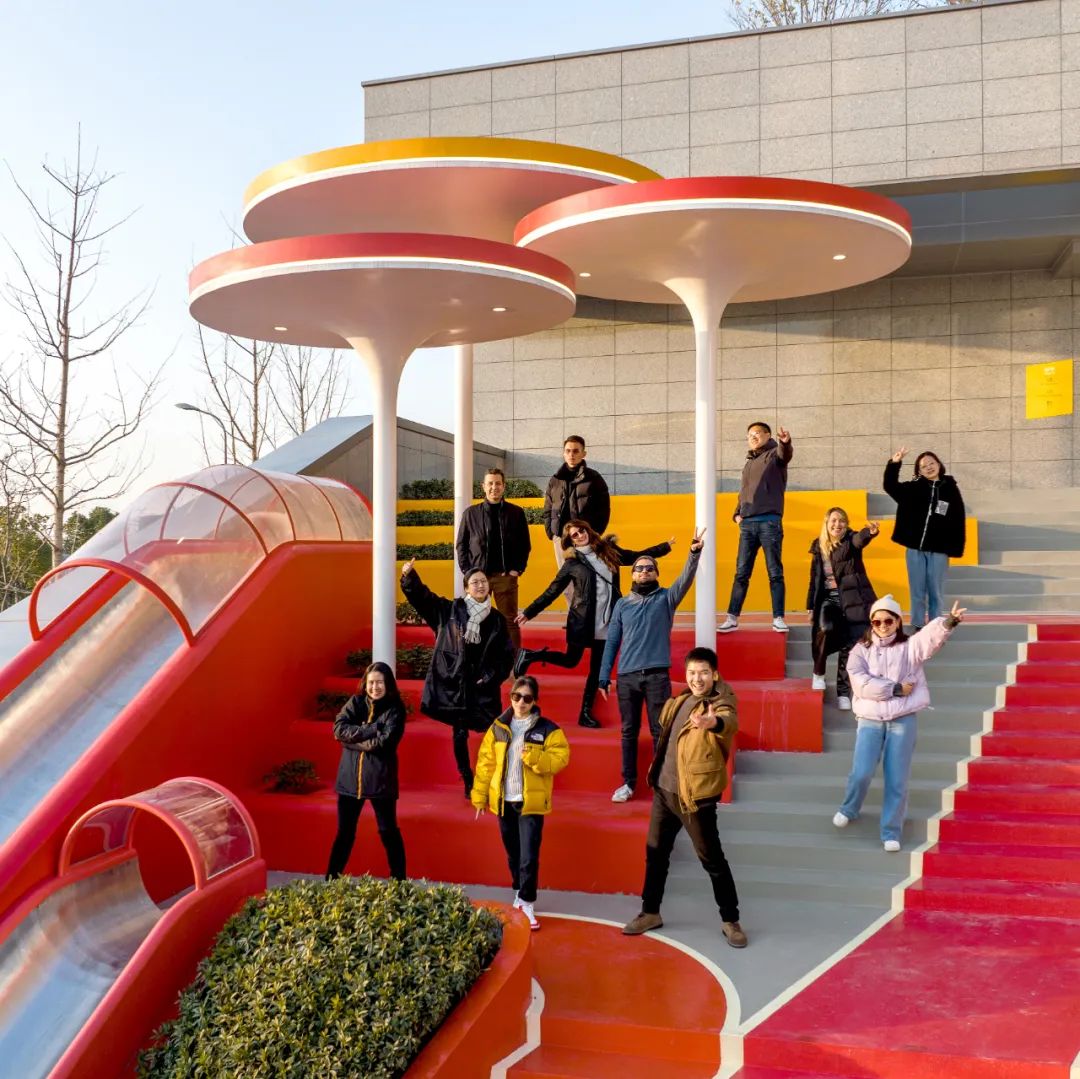
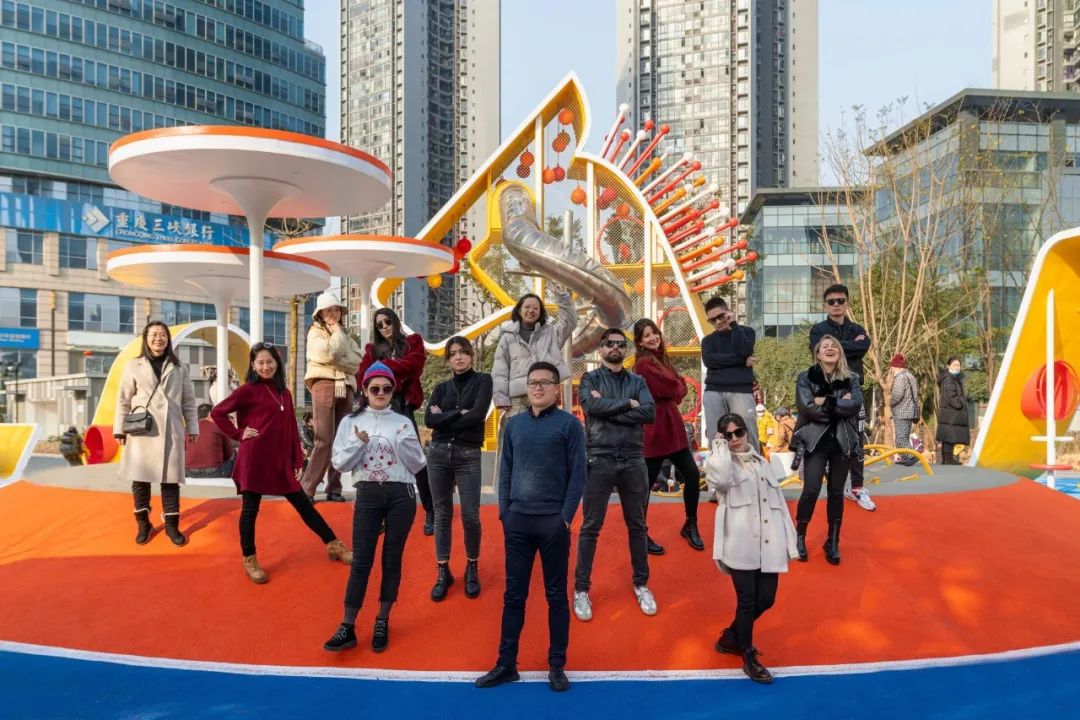
▲ 团队合影
2011年,什么样的契机让您决定前往上海创业?
In 2011, why did you decide to relocate to Shanghai?
如前所述,在欧洲知名建筑事务所工作,让我有了远大梦想。我不想回到智利,当时的节点,回国不能吸引我。我利用实习带来的“动力”,一毕业就开始申请我所欣赏的香港、新加坡、上海的设计公司。因为在FUKSAS和OMA时,从事的项目都在亚洲,所以我申请的公司也大多在亚洲。这很符合情理,虽然对中国了解不多,但在2011年、刚满24岁时,我已经在上海定居,为澳大利亚著名建筑设计公司HASSELL工作。
职场最初的几年中,HASSELL为我提供了学习和掌握专业知识的绝佳机遇。很快,我成为了项目负责人,主持大型竞赛、委托任务、博物馆、会议中心和混合用途综合体等重要项目。此外,我认识到一群优秀导师,向他们学习建筑技艺。
As I said before, having spent time in Europe working for those big firms made me dream big. I didn’t want to work in Chile. That didn’t sound appealing at that point. So, I took advantage of this "momentum" generated by all these previous experiences and, once graduated, I started applying to all the companies that I liked in Hong Kong, Singapore and Shanghai. I applied mostly in Asia, since at FUKSAS and OMA all the projects I worked on were in this part of the world. It made sense to me and, although without knowing much about China, in 2011, when I had just turned 24, I was already settled in Shanghai working for an Australian company called HASSELL, with a significant international presence.
HASSELL offered me a good opportunity to learn and develop professionally during those first years of the profession, where I quickly became project leader for large competitions and commissions, museums, conference centers and mixed-use complexes. Furthermore, during those first years, I had very good mentors from whom I learned the craft of architecture.
作为新成立的设计公司,如何接到项目并开拓中国市场?
As a new design firm, what have you done to get project opportunity and enter the Chinese market?
.jpg)
.jpg)
▲ 成都 Hello新世界 2.0
佰筑(100architects)的所有作品给出了这个问题的解答。我当时才二十四五岁,在没有人脉和关系的市场中获得机会,唯一可能的答案是佰筑:尝试做与传统新公司所从事的、截然相反的项目。
12年前,我想创造一些东西,我有变得独立自主的冲动。但我不想为了获得经验,整整十年都为他人工作;相反,我想尽快达成目标。就在那时,我对所追求的目标和实现途径有了初步结论。我明白必须让自己有别于他人,要找准市场定位。如果通过设计建筑来与老牌公司竞争,是没有意义的。我只有25岁,缺乏专业经验,住在中国。也就是说当地零人脉,比赛注定失败。我必须使用社交网络,首要的是吸引注意力。
首先是搞清楚,必须从“流行”和“有争议”的东西开始:流行,人人都喜欢,无论是建筑师,还有愿意“转发”的普通人。有争议,就能产生不同的看法。在思考过程中,我有种顿悟:要想让项目有足够的争议,就必须在公共空间。因为公共空间对每个人都很重要,而其他空间影响到的可能只有建筑师。
我现在不能确定,究竟是因为擅长公共空间设计、且商业上取得了成功,所以我才喜欢这个项目类型;还是因为我喜欢,所以会成功。不管怎样,我很擅长这个类别。这就像鸡生蛋或蛋生鸡的故事。
I think the entire 100architects project is the result of answering that question: to get space in a market where I had no contacts and no connections, being 24 - 25 years old, the only possible answer was 100architects. A project that attempts to do all the opposite to traditional new companies do.
12 years ago I wanted to create something, I had the urge to be independent. But I didn't want to spend 10 years working for others to gain experience; rather, I wanted to do it as quickly as possible. At that moment, it was when I came to the first conclusions about “what” and “how” to do it. I had to find a niche, something that would help me differentiate myself. It made no sense to try to compete with established companies by making buildings. Being 25 years old, without much professional experience and living in China, that is to say, without local contacts, it was a lost fight. I understood that I had to use social networks and, first of all, attract attention.
The first thing was to understand that we had to start with something "pop" and "controversial", pop so that everyone would like it, not only architects, but rather ordinary people who wanted to "repost" it. Controversial so that it generated different opinions. And in this process, suddenly, as a revelation, I understood that for something to be controversial enough, it has to be in the public space, since it is the only place that really matters to everyone. The rest only matters to architects.
Nowadays, I don't know if I like it because I'm good at it and it works (business-wise) or if it works because I like it. I ended up being good at designing them. It's like the story of the chicken or the egg.
在中国和西方做建筑设计,有什么差别?
What is the difference being an architect in between China and the West?
有不少差别。这个问题很复杂,可以从多个角度分析。要归纳的话,其中的差异源于使用的方法、客户的预期结果、与客户的沟通(中国人有独特的行为规范)以及典型松散市场中对待新解决方案的开放性。(每一点展开,都说来话长)
最终,这些差异与我们的设计互为对应,造就了特殊的业务类型。
There are many differences. It is a complex question that has many angles. I think to summarize in some headlines, the difference goes from the methodology that we use, the expected result from the client side, the communication differences with the client (Chinese have other codes) and the openness to new solutions typical of an unconsolidated market. (Each of these points could be develop long)
At the end, these differences are the counterpart to our design response, which all things considered, produce a very particular type of business.
100architects佰筑建筑在上海、长沙、成都等地有建成项目,您是如何理解不同的城市特质,并在项目设计中传达出来?请分享一些成功案例。
100Architects have completed projects in Shanghai, Changsha, Chengdu and the other Chinese cities, how do you comprehend and transfer the unique identity of each city through project design? Please share with us some cases that you are pleased with.
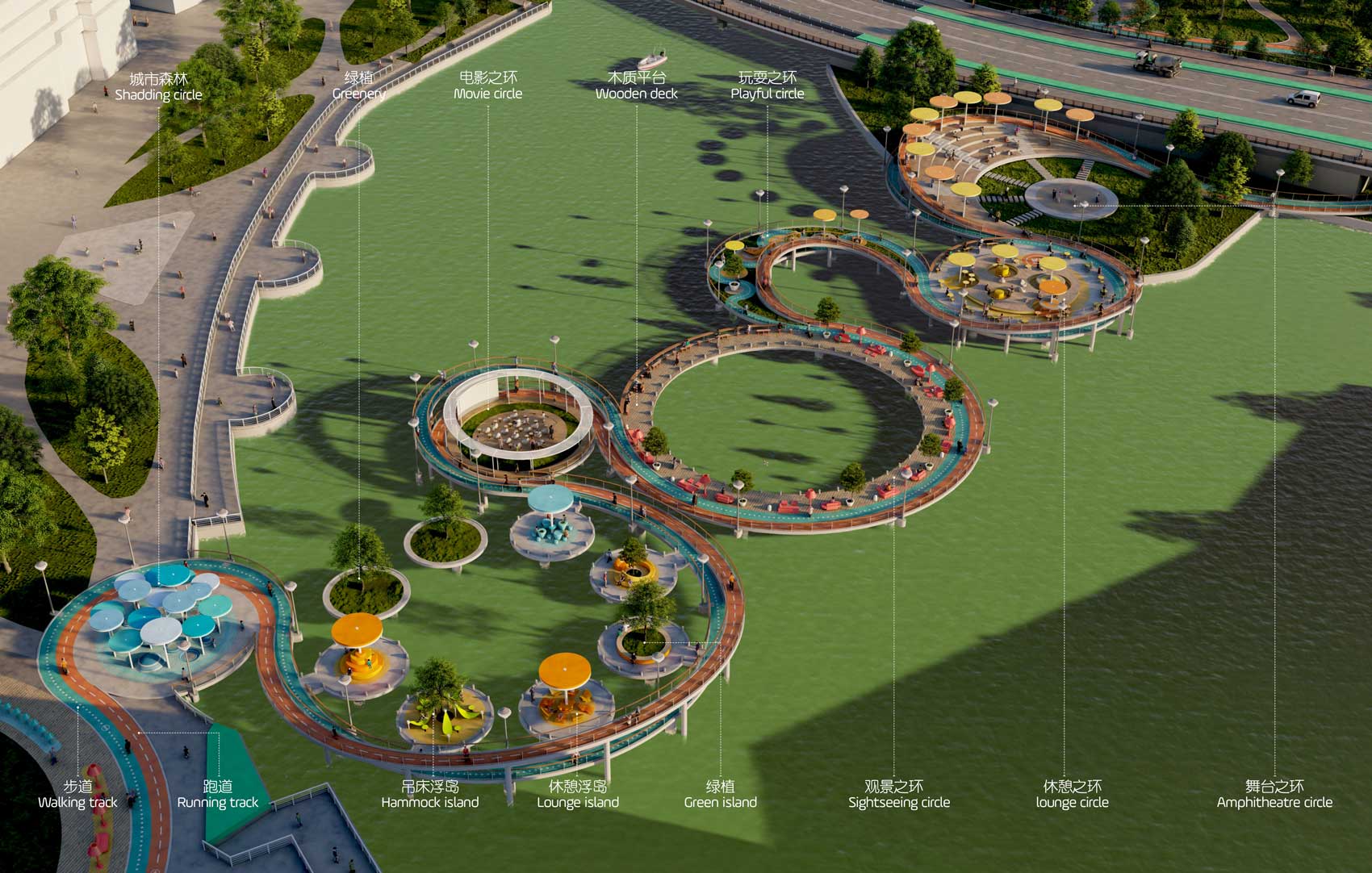
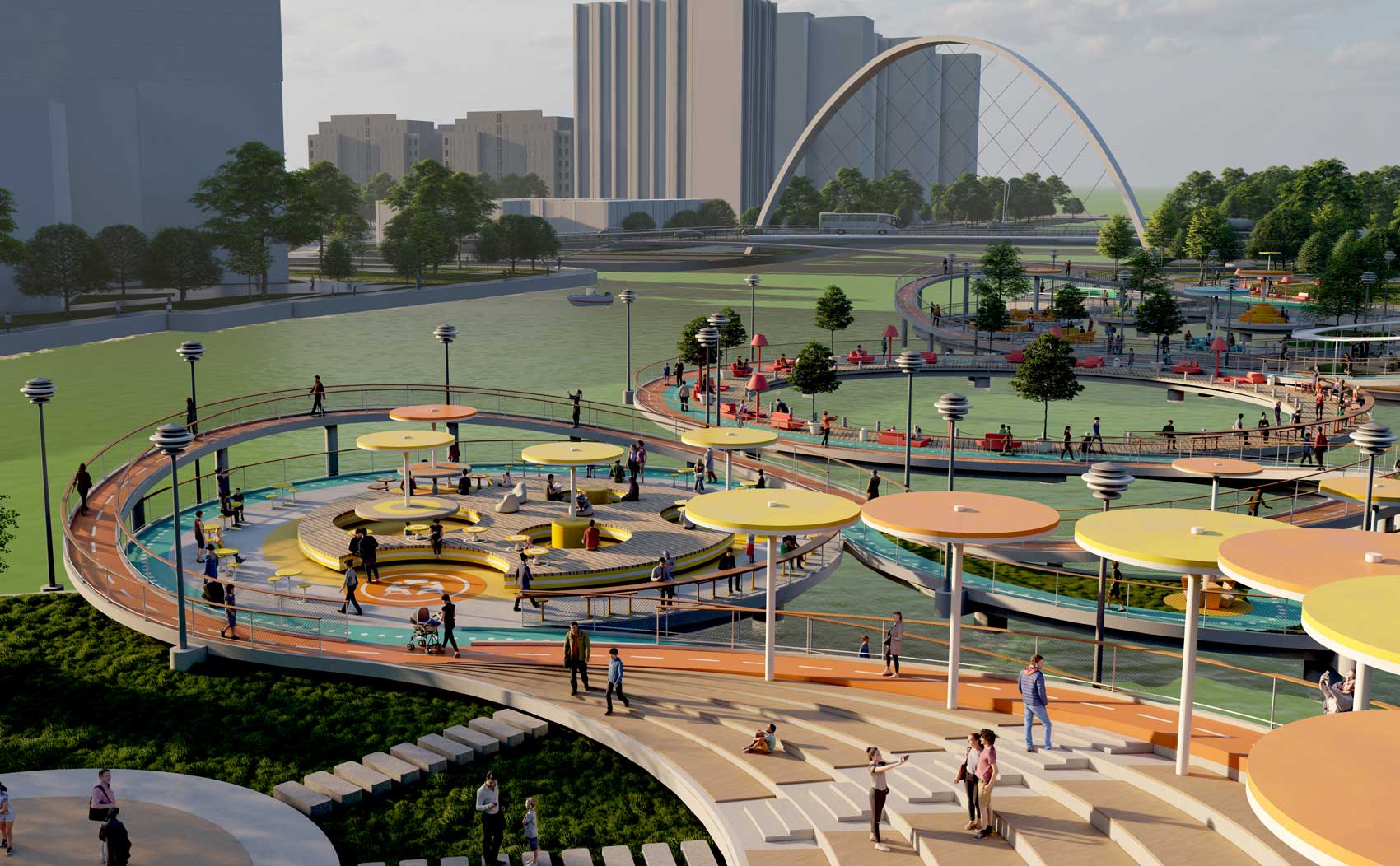
▲ 上海“八环连桥”
“在地性”不仅适用于我们的中国项目,还广泛适用于我们在世界各地开展的项目。通常,我们会从项目所在地的民间传说中获得灵感。针对未来用户熟悉的当地图像,我们会去研究并在其基础上转换、变形和强化,为新用途做准备。
作为我们高度吸睛的原则之一,人们看到我们项目时,会注意到一些可识别的元素,不仅串联起过往的记忆,还会创建新的关联。
I think this doesn’t only apply to our Chinese projects, but instead to the projects we do all over the world. We usually draw inspiration from the local imaginary preexisting in the location of the project. That is to say, we first research local icons or images common and known to the future users, then we build upon them, transforming, twisting, and enhancing them in order to serve a new purpose.
This is one of our rules for hyper-stimulating architecture, when people look at our projects they will see recognizable elements with which they will have previous connections and create new ones.
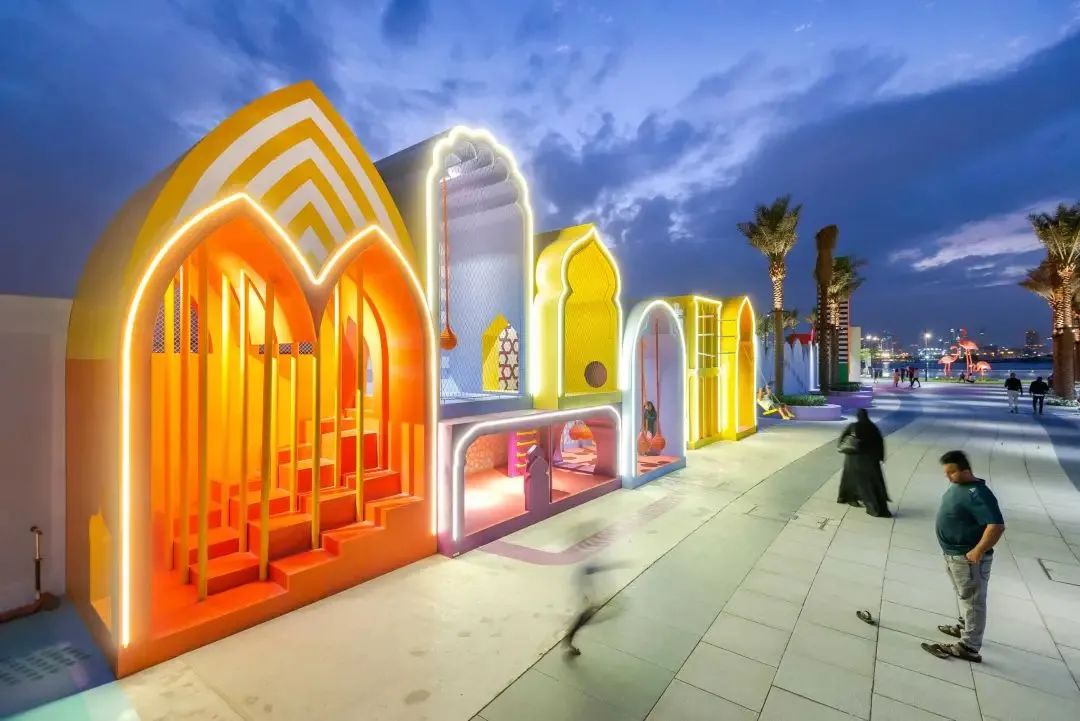

▲ 迪拜Creek Play
项目使用了阿拉伯建筑图标、符号和图形。
_The project Creek Play in Dubai uses Arabian architecture icons, symbols and shapes.
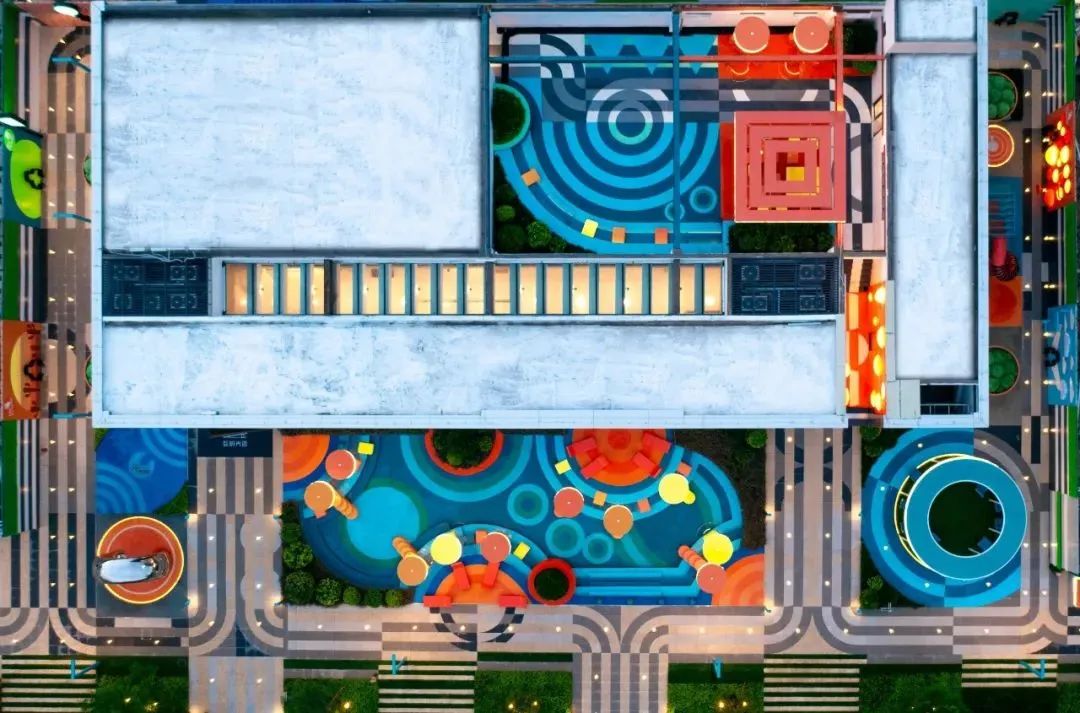
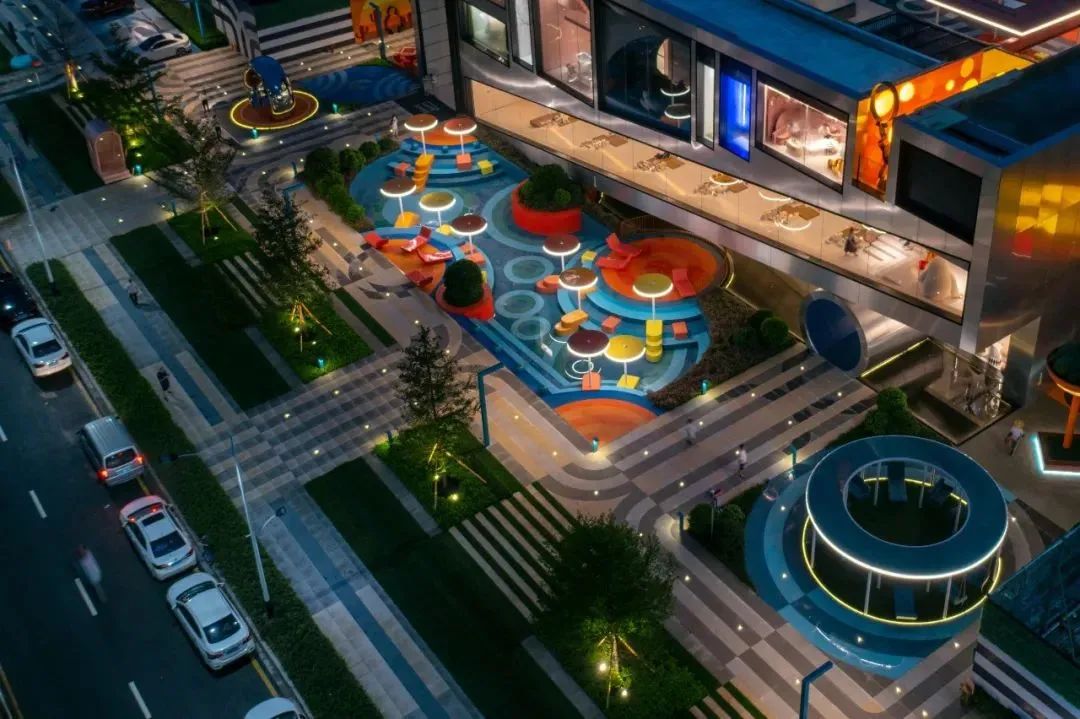
▲ 广州城市涟漪项目
灵感来源于珠江水流,用抽象的方式创造了流动的走廊、形状与岛屿。
_The project Urban Ripple in Guangzhou is inspired in the river flow from the Zhujiang River (Pearl River) to create flowing corridors, shapes and island, all in an abstract way.
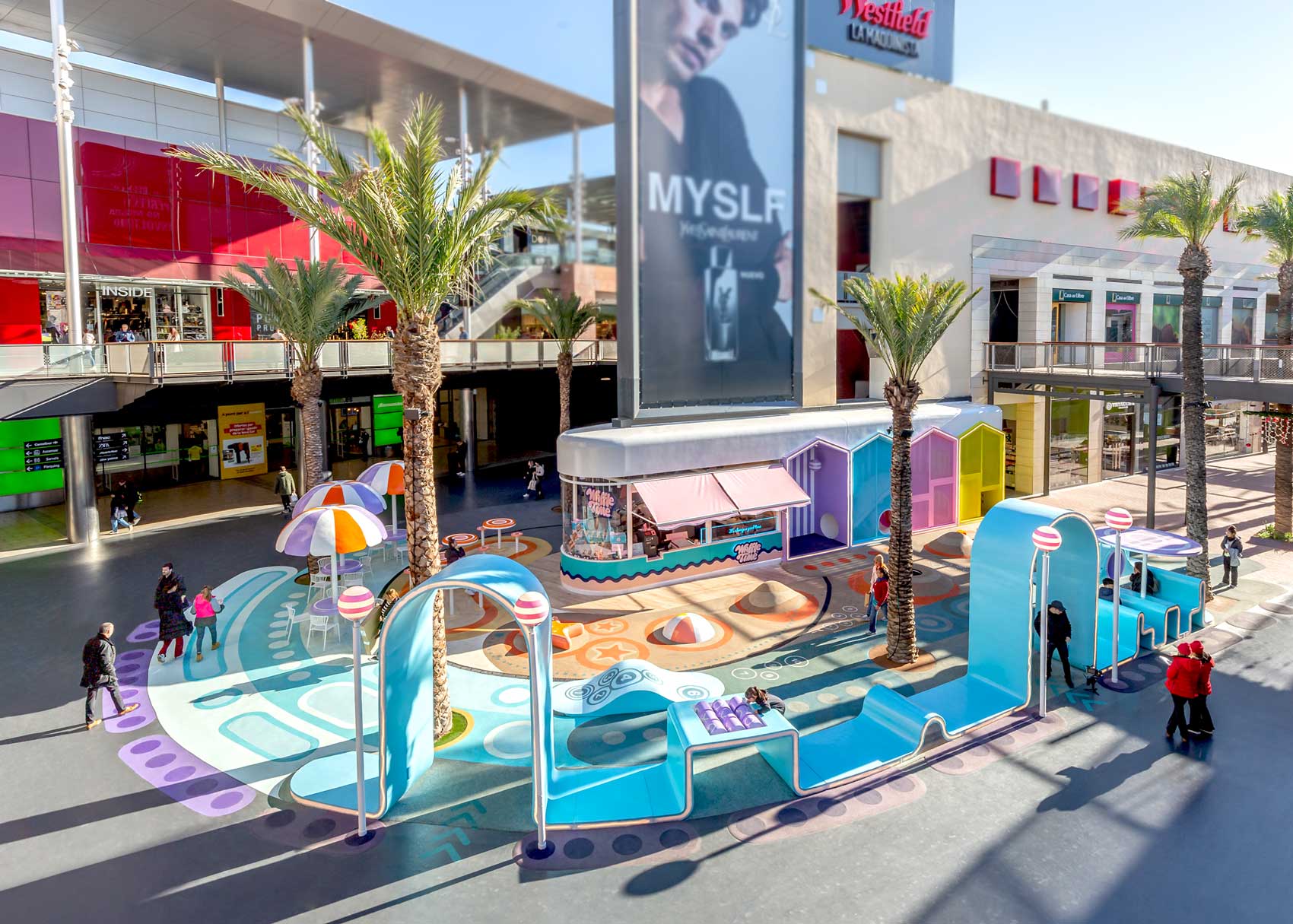
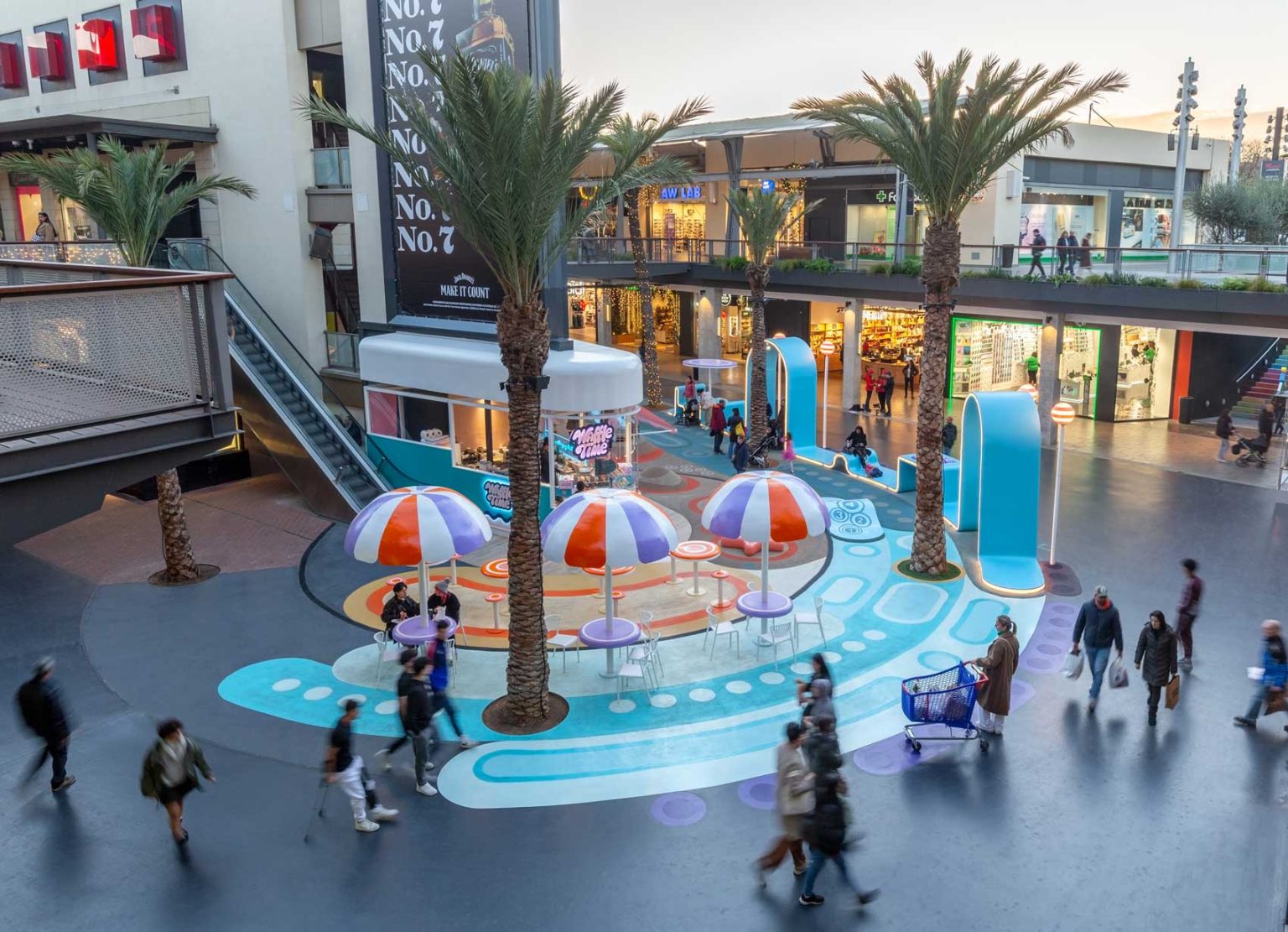
▲ 巴塞罗那La Barceloneta项目
从夏季的色彩和元素中汲取灵感,基于闻名遐迩的巴萨海滩的,用色彩和元素激发出“海滩心情”。
_La Barcelonita in Barcelona draws inspiration from summer colors and elements that inspire “beach mood” from the famous La Barceloneta Beach.
为什么专注于激活公共空间的项目设计,而不是去设计建筑本身?
Rather than design buildings, why have you been focusing on revitalizing public spaces?
针对这个实际问题,已经给出了部分合乎逻辑的回应。不过我还可以从其他角度谈谈。
对我们来说,在公共场所工作是一种特权,因为这是作为设计师,对最多的人产生最大影响的地方。这个项目类型振奋人心,可表达的内容很多,创新空间也很大。
在我们的项目中,学习并发展出通往某些城市理想的系统化意识流理论。
我们决定致力于公共空间的未来。因为未来城市涉及的动线空间会减少,而公共空间会增多,而这将是未来城市生活最重要的挑战之一。在后工业革命时期,人类为了发展经济,牺牲了太多东西,比如直接影响公共空间的速度和通信的负面外部效应。
佰筑构想的未来城市中,公共空间将成为儿童、年轻人、成年人和老人的娱乐休闲区。游乐空间和城市其他部分的分界被模糊化。
Well I think part of the question is answered with the above mentioned, it was a logical answer to a practical problem. however I can tell you a few other angles to it.
For us working in the public space is a privilege. Is where our reach as designers have the largest impact in the biggest amount of people. It is an inspiring job, especially because it seems that there is a still lot to say, there is big room for innovation.
And out of the 100architects project, we have learned and develop an entire stream of thought that leads us to certain city ideals.
We decided to dedicate our company to the future of public spaces because the future of the city involves less circulation and more public space. I believe that this is one of the most important challenges for the future of urban life, since in the gigantic development that humanity has experienced post-industrial revolution, much has been sacrificed for development, and the negative externalities of speed and communication directly impacts the public space.
At 100architects, we imagine the cities of the future where public spaces will be recreational areas for children, young people, adults and grandparents alike. And where the limits of the play space and the rest of the city are blurred.
您提到:我们将城市想象成市民的游乐场。你们创建了许多色彩缤纷、有趣的装置,创造力源自哪里?您的童年是什么样的?
You mentioned“we imagine cities as playgrounds for citizens”. In view of those colorful, playful installation you created, I wonder where is the inspiration from? And what is your childhood like?
我在智利南部的小镇长大。几乎整个童年,大约八年都和家人在那里度过。我10岁时,全家搬到了圣地亚哥。我们原来居住的小镇名叫“Laja”。玄妙的是,来自最小镇子的孩子最终来到了最大的城市——上海。
人生最初的几年中,我在任何地方都可以自由玩耍。孩子们在小镇生活很安全,还能享受到对儿童来说很稀缺的独立自由。我们可以在广场上与朋友见面,在没大人照看的情况下四处玩耍,从山丘到广场。
我大不确定设计灵感的来源,或许结合了实践思维、商机发现和创造性灵感。
I grew up in a very small town in the south of Chile. With my family we spent there about 8 years, almost all my childhood until I was 10 years old, when we finally moved to Santiago. It was a small town called Laja. Somehow I found paradoxical that the kid that comes from the smallest town ended up in the biggest one - Shanghai.
Those first years of my life where great, we would play freely everywhere. A small town like this one was safe for kids like us. And we, despite being kids, would enjoy of a level of independence that is very rear in young kids. We could meet our friends in the plaza and go around without supervision playing everywhere, from the hill to the squares.
Not really sure where the inspiration comes from, or maybe is a construct that combines practical thinking, discovery of business opportunity and creative inspiration.
作为智利建筑师,能否介绍一下圣地亚哥的建筑?
As a Chilean architect, could you tell us what are the buildings like in Santiago?
智利的建筑并非汲汲无名,不仅在圣地亚哥,甚至在智利各地,都有一些国际知名建筑师。我从小就仰慕这些人。近年来,就有智利建筑师获得普利兹克奖。
我认为智利建筑师的特别之处在于,能用少量资源完成更多任务。智利是发展中国家,因此要求建筑师具备独创性以及解决问题的创造力。
Chilean architecture is nothing of unknown, there are many great internationally recognized architects not only in Santiago but all over Chile. I grew up admiring them. In fact, even a Pritzker prize in the recent years.
I guess a distinction architects in Chile might have is that Chilean architecture does a lot with few resources. We are from a developing country, therefore a lot of ingenuity and creativity to problem solving is required.
人工智能对设计有何影响?你们使用了人工智能或其他科技工具去优化设计吗?
How will AI impact design? Have you used AI or the other technological tools to improve the design?
在我看来,人工智能(AI)的到来,让我们更强大。项目发展阶段中,AI能加快我们的进程,提升我们的想象力,并节省成本。
我们在每个项目中都会使用AI工具。主要是在概念阶段,AI为图像生成模型提供灵感。尽管并不完美,但提供了好的开始。
不过,在技术性相对较强的方案设计和扩初设计阶段,AI很快就能做到项目开发。要不了多久,我相信每个项目只需要一个建筑师。只要和AI不断协作,就能生成所有项目文件。建筑师只需要做监督管理。
In my view AI comes to amplify us. It will speed up our processes, enhance our imagination capabilities and save cost in the project development phases.
100architects we use AI tools in every project, however mainly at the conceptual stages as inspiration with image generating AI models. They aren’t perfect but it is a good start.
But soon the AI will be able to develop a project, that is to say SD and DD phases which are the more technical part of the architecture. I believe before long, we will only need one architect per project, working in constant collaboration with an AI which will be producing all the project documentation. The architect job will be mainly supervision.
100architects佰筑建筑在迪拜建立了办公室。如何构想未来在中东地区的发展?国内建设量近年存在萎缩,公司现状和未来经营策略如何?
You have established a new office in Dubai. How do you envision the development of 100Architects in Middle East? Considering the downsizing construction scale in recent years, what is the status quo and strategy of 100Architects’s business in China?
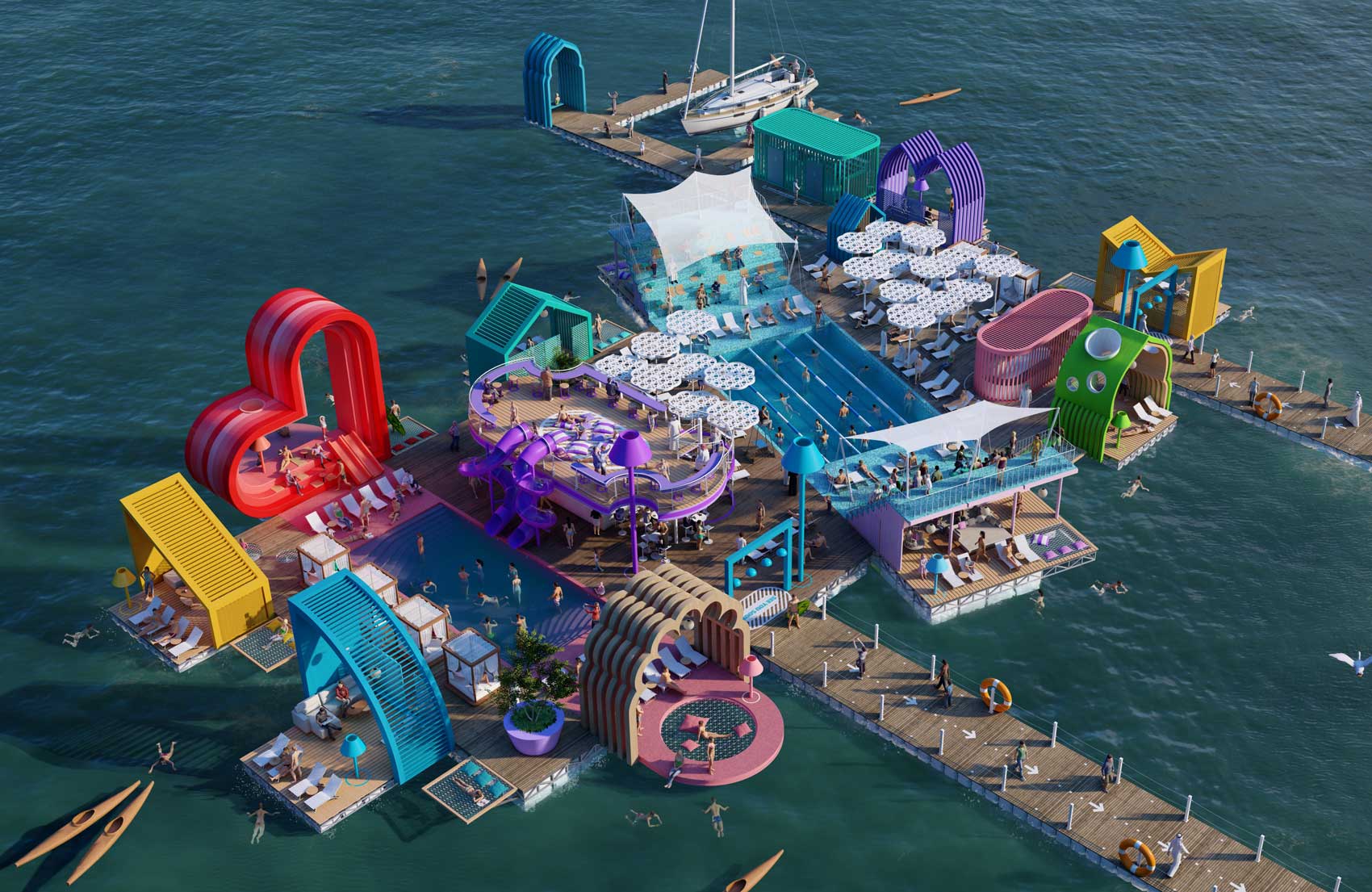
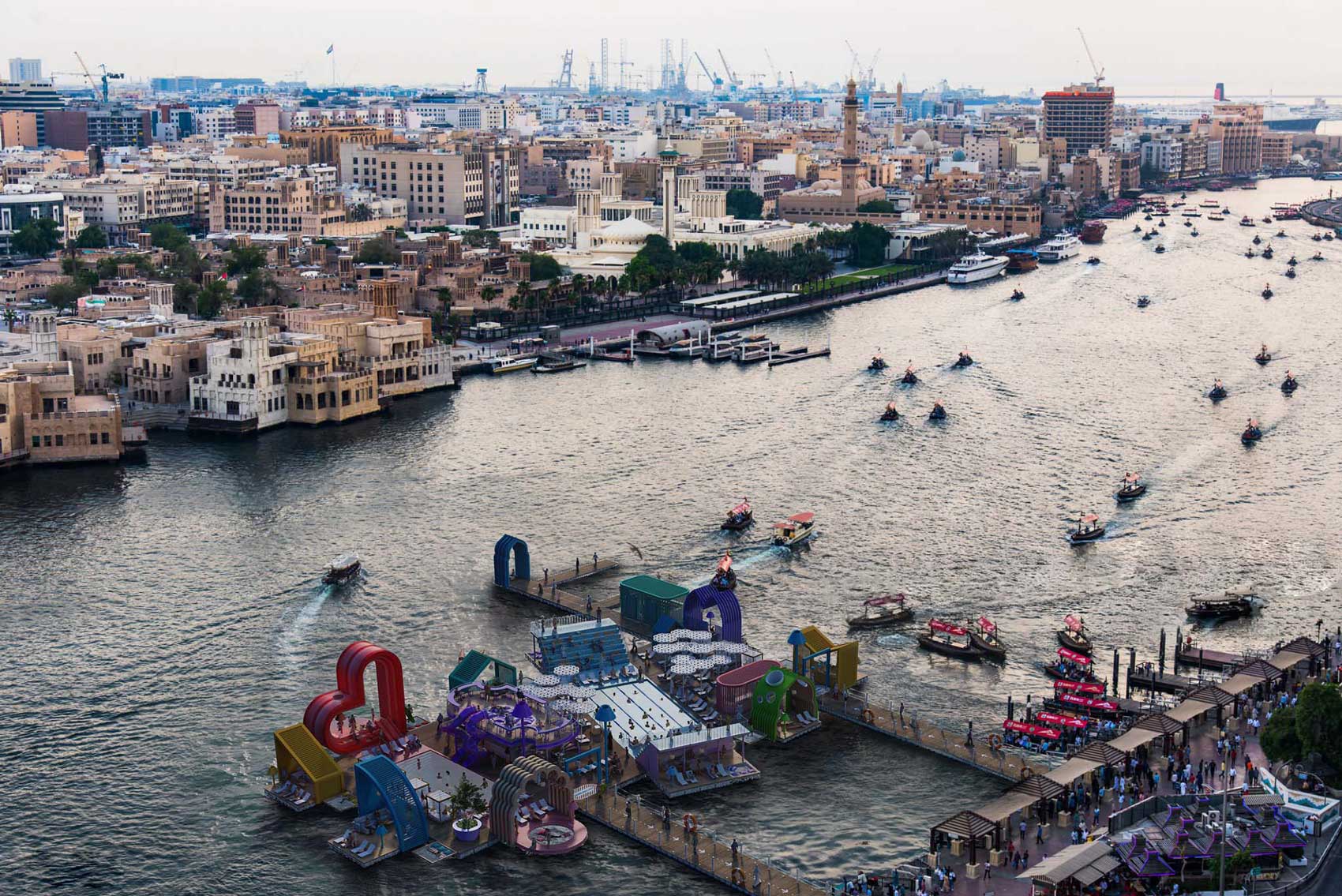
▲ 迪拜幻飘魔方泳池
去年,我们的业务变化很大。主要办事处在上海,设计团队也在这里。我们的设计建筑从上海走向全世界。目前,公司80%的项目分布在世界各国。
这一结果来自两个因素:第一个是中国经济在两年内急剧放缓。第二是我们的知名度呈指数级增长;由于业务和产品的特殊性,我们能够在世界各地获得客户。
我们现在有两个办公室。总部在上海,包含所有设计团队。最近,第二个办公室在迪拜开业,现设有销售和业务开发团队。
这种模式源自我们的扩张战略。我们相信中东和非洲北部(Mena地区)将是今后十年我们的业务发扬光大的区域。其实,目前我们公司进行中的所有大型项目都位于中东和北非地区。
在中东和北非地区,我们有机会利用过去11年来一直在开发的所有概念,并将其推广到大都市的尺度。例如正在开发中的一个埃及项目,是6万平方米的大型公园,将是我们首个该类型的项目。
Last year our business had a big turn. Our main office is located in Shanghai where we have our design muscle. But from Shanghai we design architecture to the world. Currently, 80% of our running projects are spread in different countries around the world.
This is a result of 2 factors, the first is the Chinese economy slowing down drastically in the last 2 years. The second is the fact that our popularity has increased exponentially, and because of the particularities of our business and product, it has allowed us to acquire clients all over the world.
In this moment we count with two offices. Our main headquarters is here in Shanghai, where we have the entire design team, and a second office recently opened in Dubai, where for now, we have a sales and business development team.
This is related to our expansion strategy. We believe that the middle east and north of Africa (MENA region) will be a very prosperous place for our development in the next 10 years. In fact, all the big projects running at our office in this very moment are located in MENA region.
It is where we have the opportunity to take all the concepts we have been developing for the last 11 years and taking them to a metropolitan scale. For example, we are developing in this very moment a project in Egypt that is a huge park 60.000 m2 that will be the first of its type.
项目案例
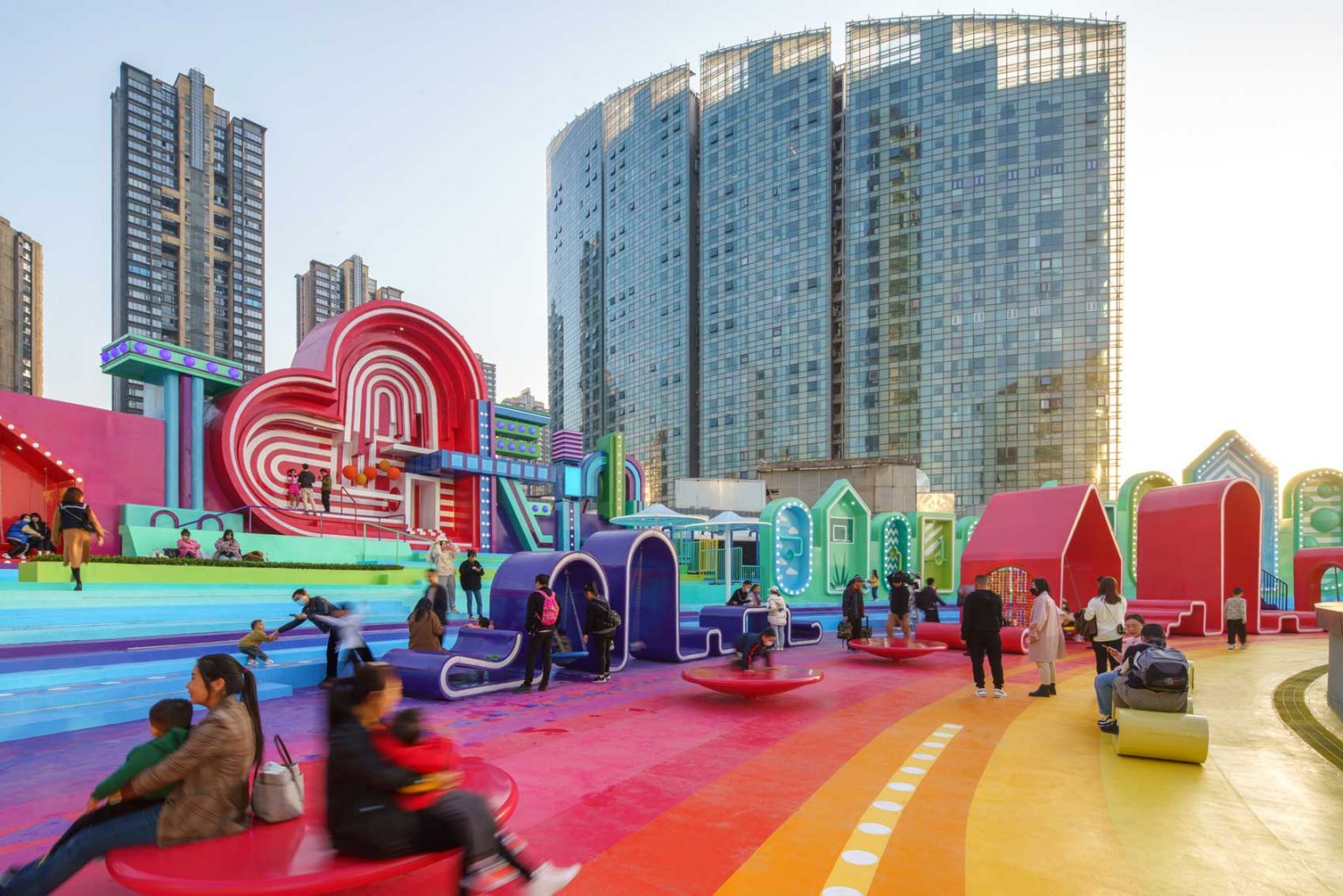
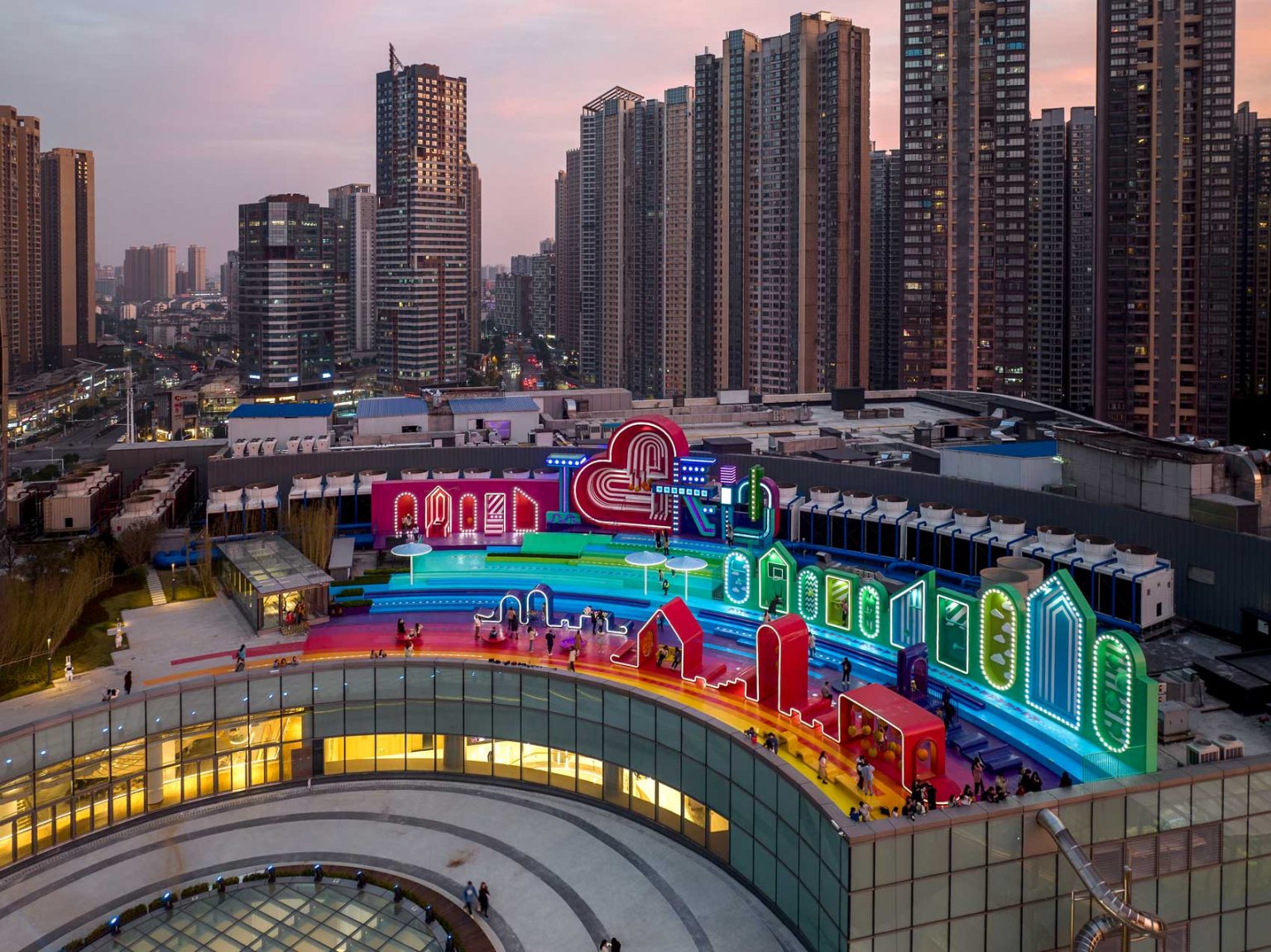
▲ 长沙“彩虹之上”
以彩虹为设计灵感的、极度吸睛的高颜值屋顶公共空间改造项目。
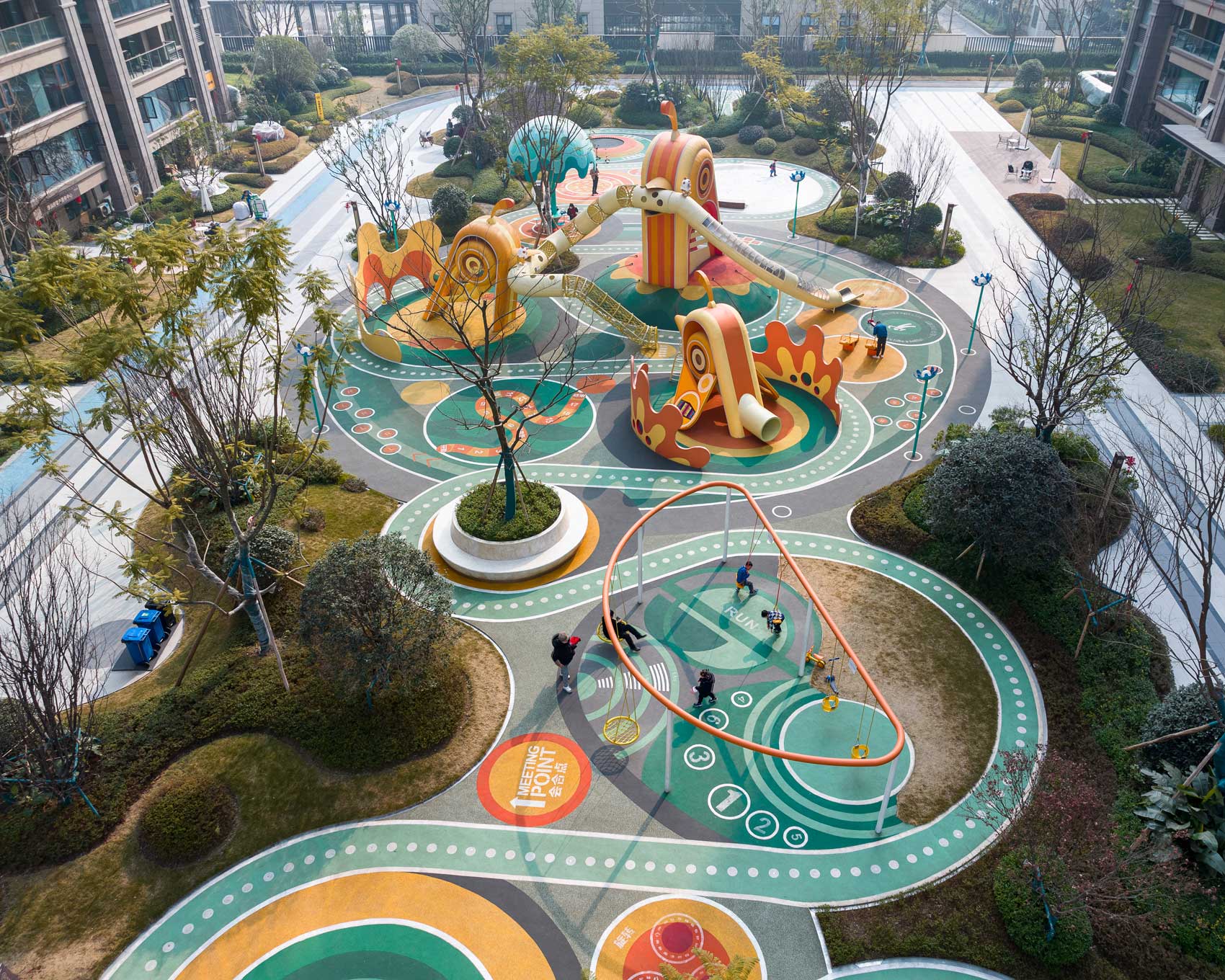
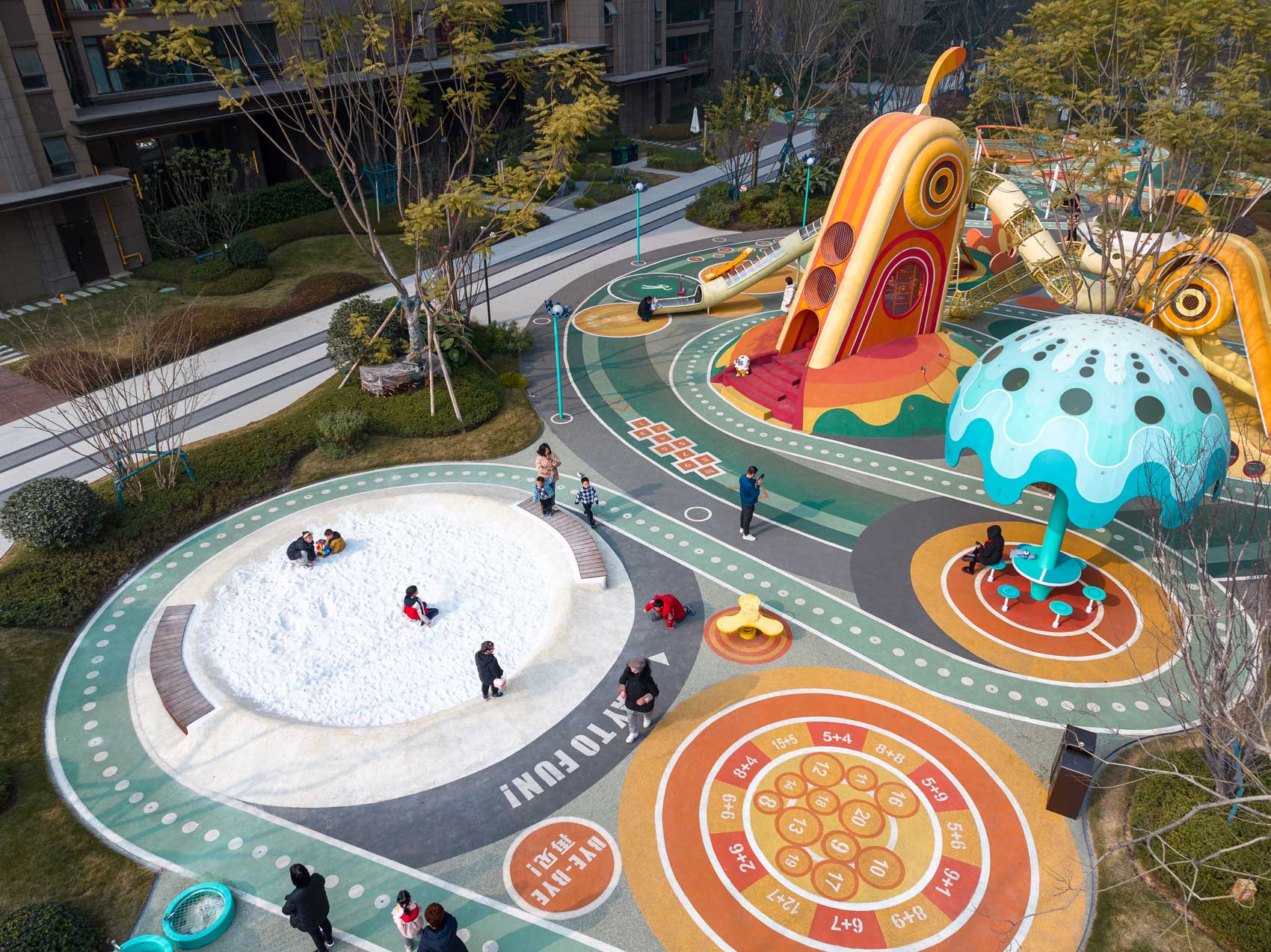
▲ 成都 Hello新世界 2.0
延续“城市玩具”概念,设计的城市游乐场为全年龄段的人带来休闲和娱乐。
.jpg)
.jpg)
▲ 西班牙马拉加魔法谷
翻新设计项目,将针对位于西班牙马拉加市的某妇幼医院儿童休闲区进行全新的设计介入。
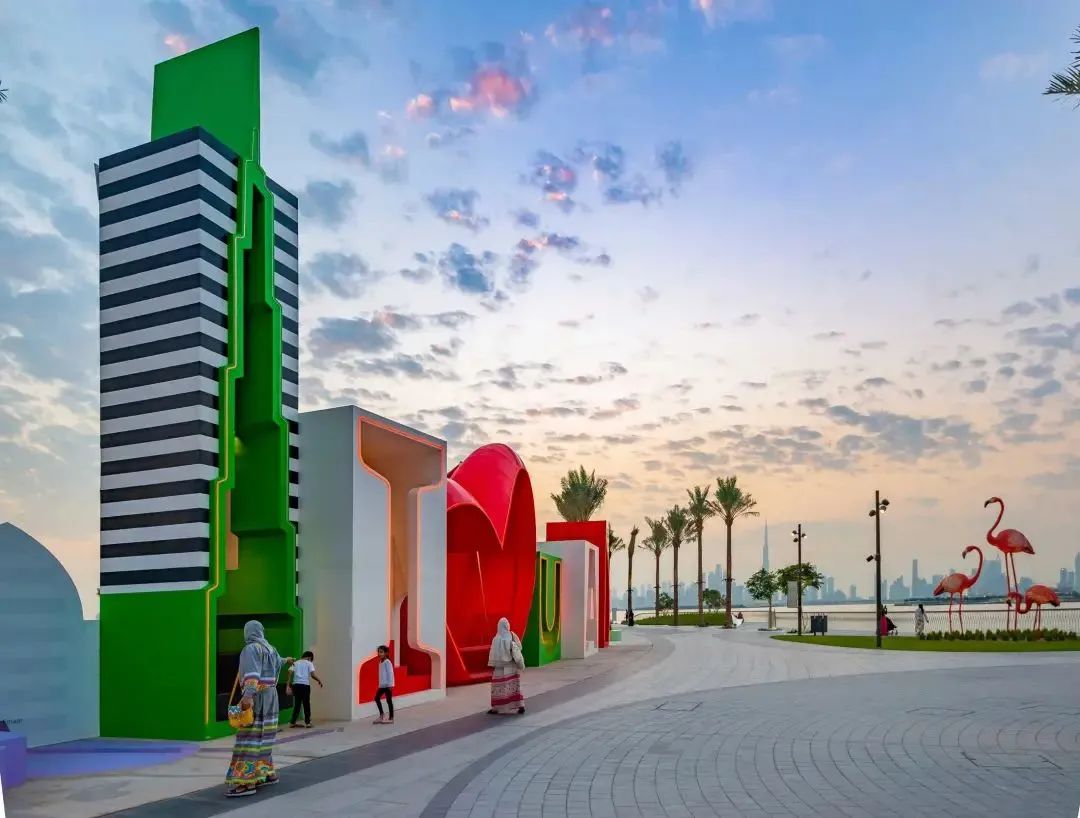
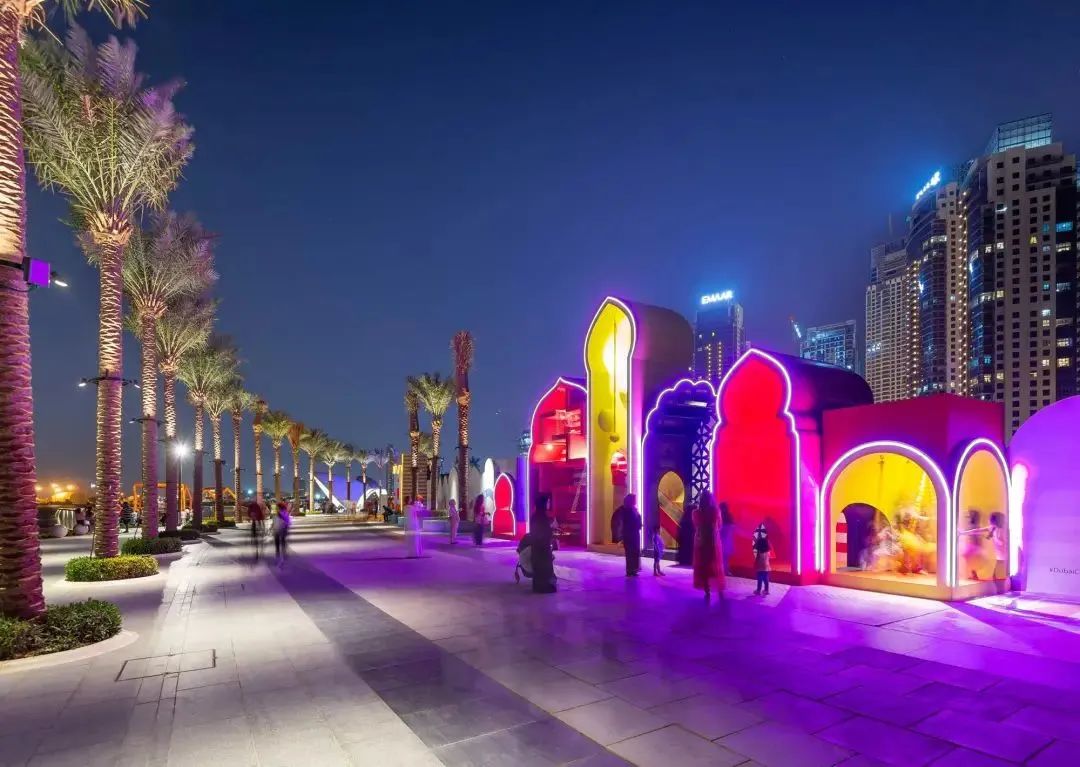
▲ 迪拜Creek Play
设置了对行人友好的人性化的街道,是针对迪拜云溪高顶的公共区域提升项目。
人物介绍
Marcial Jesus是一位拥有超过12年国际工作经验的建筑设计师,其中9年投身于中国建筑设计行业。在创建佰筑之前,他曾在BENOY(英国)担任设计副总监,并在HASSELL(澳大利亚)担任高级建筑设计师。Marcial曾效力于在意大利罗马的FUKSAS(2009年)和荷兰鹿特丹的OMA(2010年),然后于2011年移居上海。
Marcial Jesus is an architect with more than 12 years of international work experience, 10 of which have been spent developing architecture in China. Prior founding 100architects, he worked leading projects as an Associate Director at BENOY (UK) and Senior Architect at HASSELL (AU). Other than that, Marcial gained international work experience at FUKSAS in Rome, Italy (2009) and OMA in Rotterdam, Holland (2010), before relocating to Shanghai in 2011.
他于2010年毕业位于圣地亚哥的智利大学的建筑与城市规划学院(FAU),并于2011年成为智利建筑师协会的一员,成为持牌建筑设计师。Marcial目前正在上海带领佰筑致力于开发公共领域和超趣味的项目。
He graduated in 2010 from the Faculty of Architecture and Urban Planning (FAU) of the Universidad de Chile in Santiago, and entered the Chilean Architects‘Association as a licensed architect in 2011. Marcial is currently leading the 100architects Studio in Shanghai, developing innovative projects with special focus in the public realm and hyper-stimulating architecture.
发表评论
最新评论
 投稿
投稿



